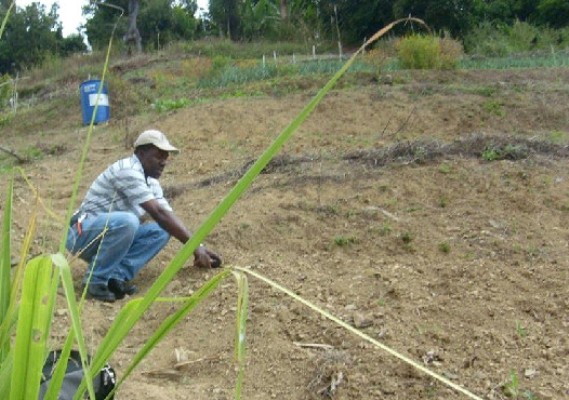The commonly used unit for measuring the area of land is an acre. But this unit is applicable in the case of vast land areas. The smaller unit, which is also widely used to measure land area, is the square foot. You can simply calculate the square footage of any area with the help of a measuring tape and 2 basic mathematical formulas. It is very important to know the area of your land, especially when you need to sell or purchase a piece of land or to calculate your annual crop yield from an agricultural farm.

Difficulty level
The difficulty level of this project is medium. The personnel involved must know how to use a linear measuring device and to do some basic mathematical calculations.
Resources required
- A measuring tape (preferably the flexible one made of artificial fiber) or a measurement wheel
- A notebook
- A pen
- A calculator
Time required
The time required to complete this project depends on the total land area to be measured. Generally, a regularly shaped area of about 100 square foot requires about half an hour to measure.
Estimate cost
This is a zero cost project as all the resources are easily available in any household.
Instructions
- First of all, measure the length and breadth of the land with the measuring tape or measurement wheel. If you have a big plot of land, you can use your car to measure it’s dimensions with the help of the odometer readings. Take the readings on the foot scale of the measuring tape.
- In case you do not have a regularly sized plot, measure the dimensions of the biggest rectangle possible within the entire area. Then divide the irregular portion of land into small rectangles and triangles and measure their dimensions. In the case of rectangles, you need to measure the length and the breadth. Whereas, in case of triangles, assume any side as the base and measure it along with the height of the triangle from that particular base.
- Note down the measurements on the notebook in a systematic manner. Make sure that all the units are in feet. Fractions if any may be put after the decimal point. This will make your calculations easier.
- Once you have finished noting all the measurements, it is time for some preliminary calculations. In the case of a rectangle, calculate the square foot area by multiplying the length by the breadth. The result you get will be the square footage area of the rectangle. Whereas in the case of a triangle, you have to multiply the base by the height and divide the result by 2. This gives you the square foot area of the triangle.
- Now add up all the square foot areas of the rectangular and triangular fragments of the land plot. This will finally give you the total area of your land in square foot.
- You can later convert this square foot area into acres or square mile by using their respective formulas.
Quick tips
- Make sure to take the measurements along straight lines. This will help reducing errors.
- Do not make unnecessarily small fragments. Select every possible biggest shape while choosing the fragments of the land.
- It is better if you have a rough drawing of the land which will help you to estimate it’s shape and decide how to divide it. Go on marking on the drawing as you continue with the measurement. This will help you to mark up the actual area of each of the individual land fragments.
- Call in for an assistant to hold the measuring tape from the other side. Try to take the measurements a bit higher than the ground level. This will avoid the measurement errors due to uneven land undulations.
- Avoid using metallic tapes for such measurements.
Possible risks involved
- Make sure that all the measurements are precise in the most accurate way. It is because that an erroneous measurement leads to an wrong result. This may lead to economic loss in case of land sold or purchased. It can also lead to wrong outcomes in case of a crop harvest prediction.
- Ensure that there is a visible and clear boundary line around the overall plot so that you don’t measure up some other’s land.
- Never mix up the units in which the measurements are being taken. That will lead to serious errors in the final result.
Conclusion
Land measurements are very much informative and essential regarding any land related dispute, purchase or sale of land property, before building up a boundary wall, etc. and thus should be done very carefully with the best possible accuracy.




